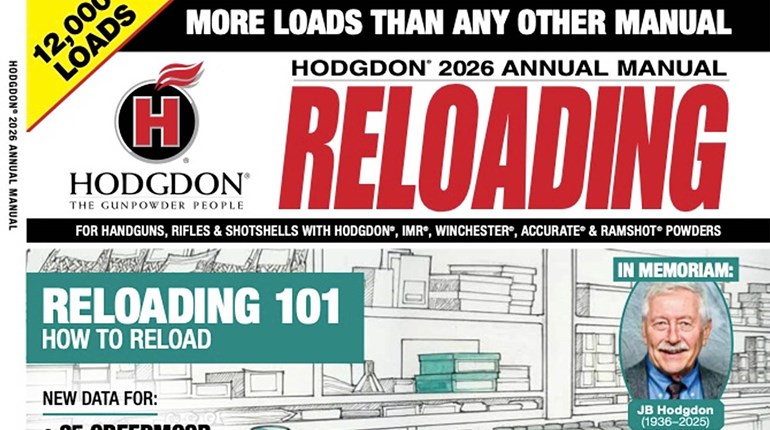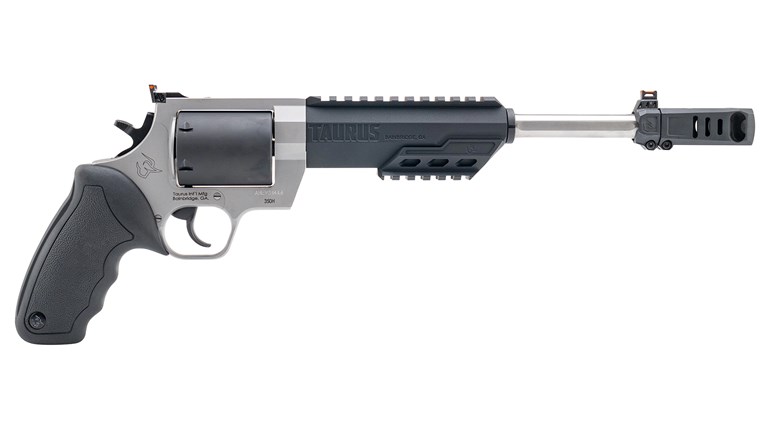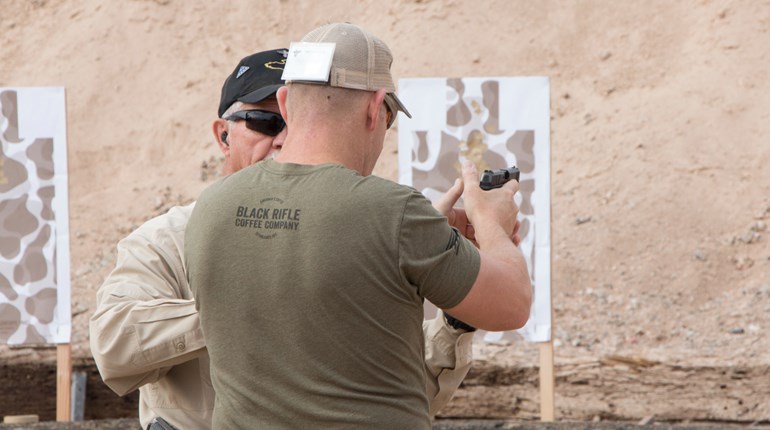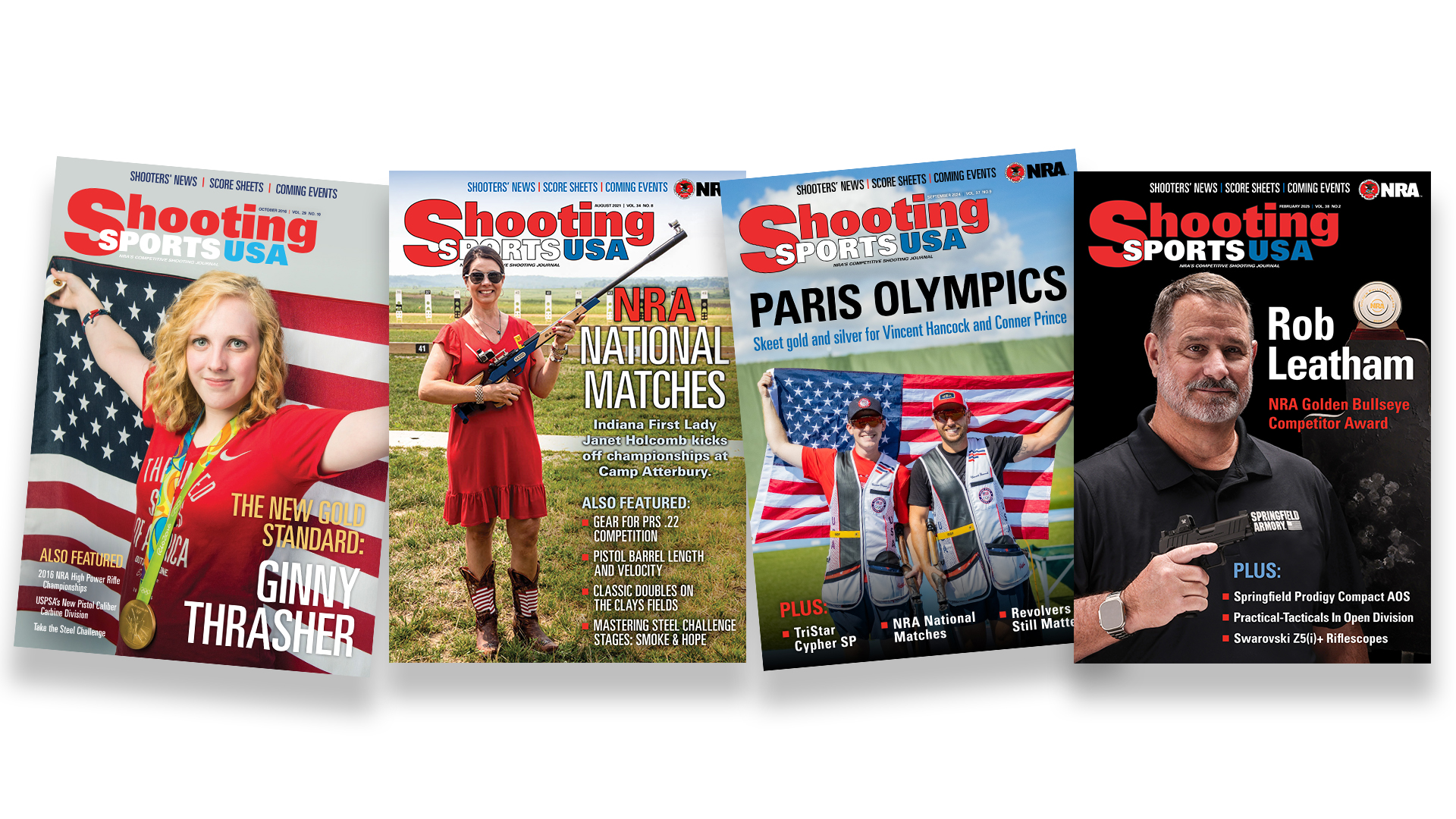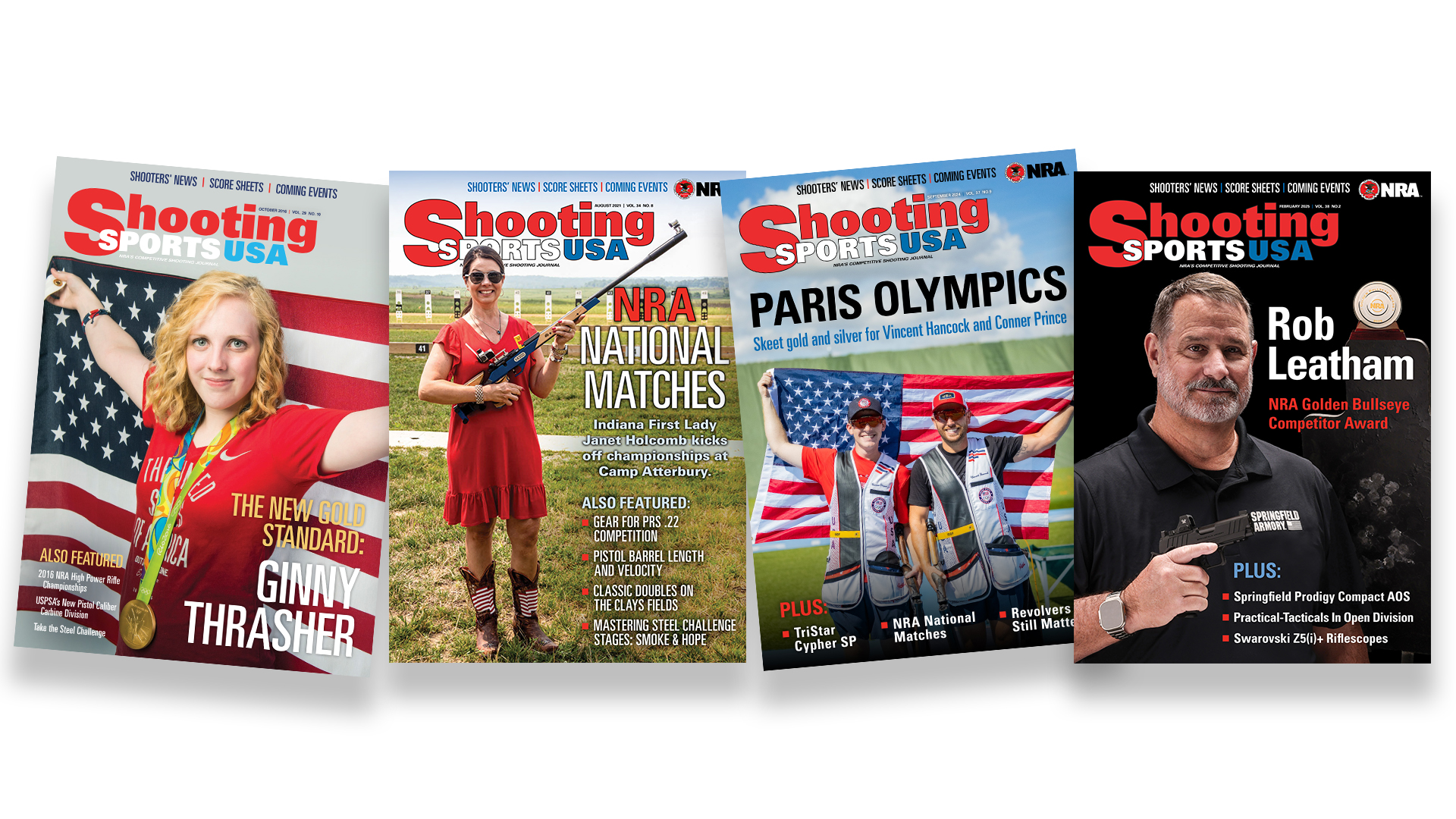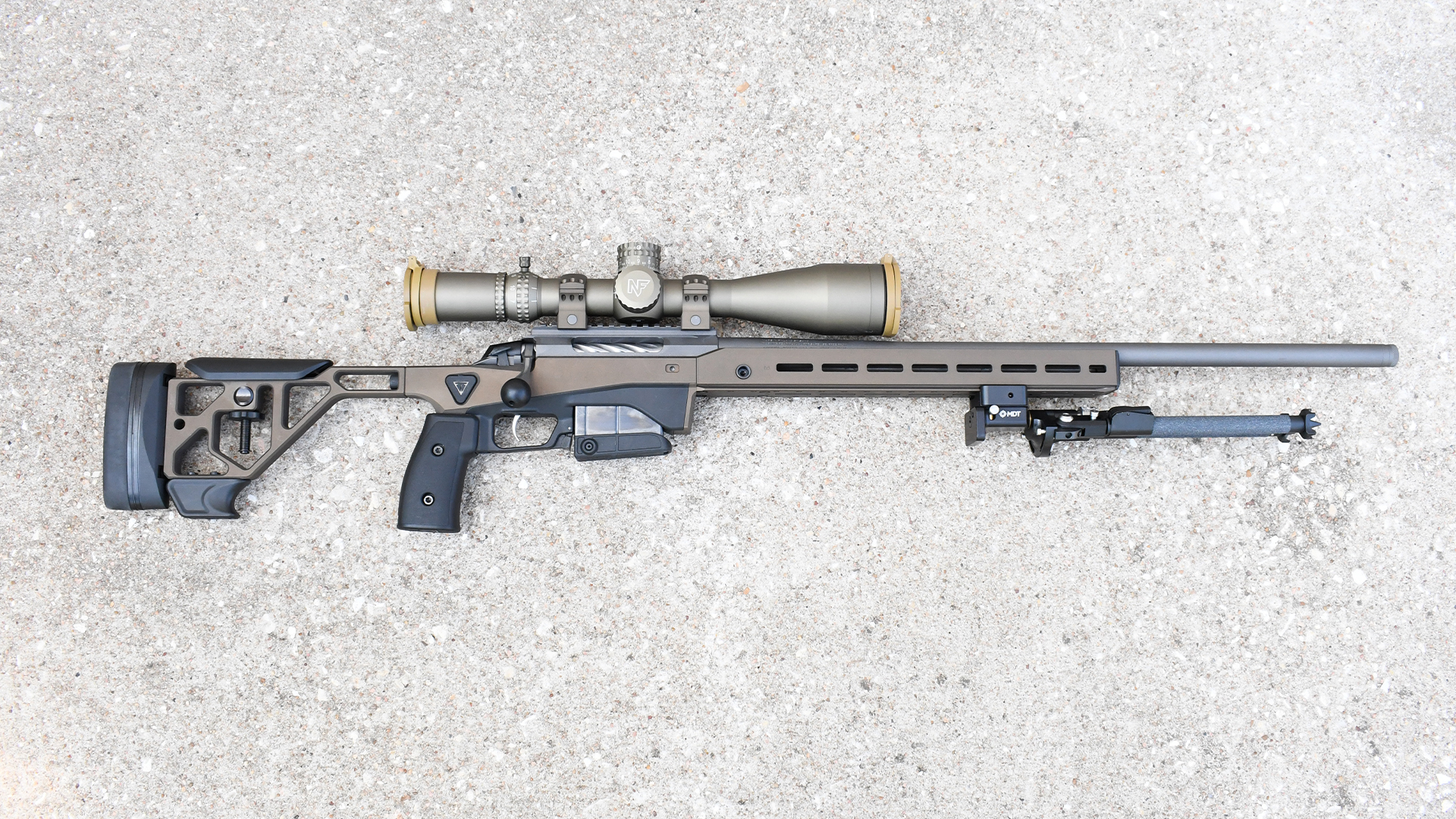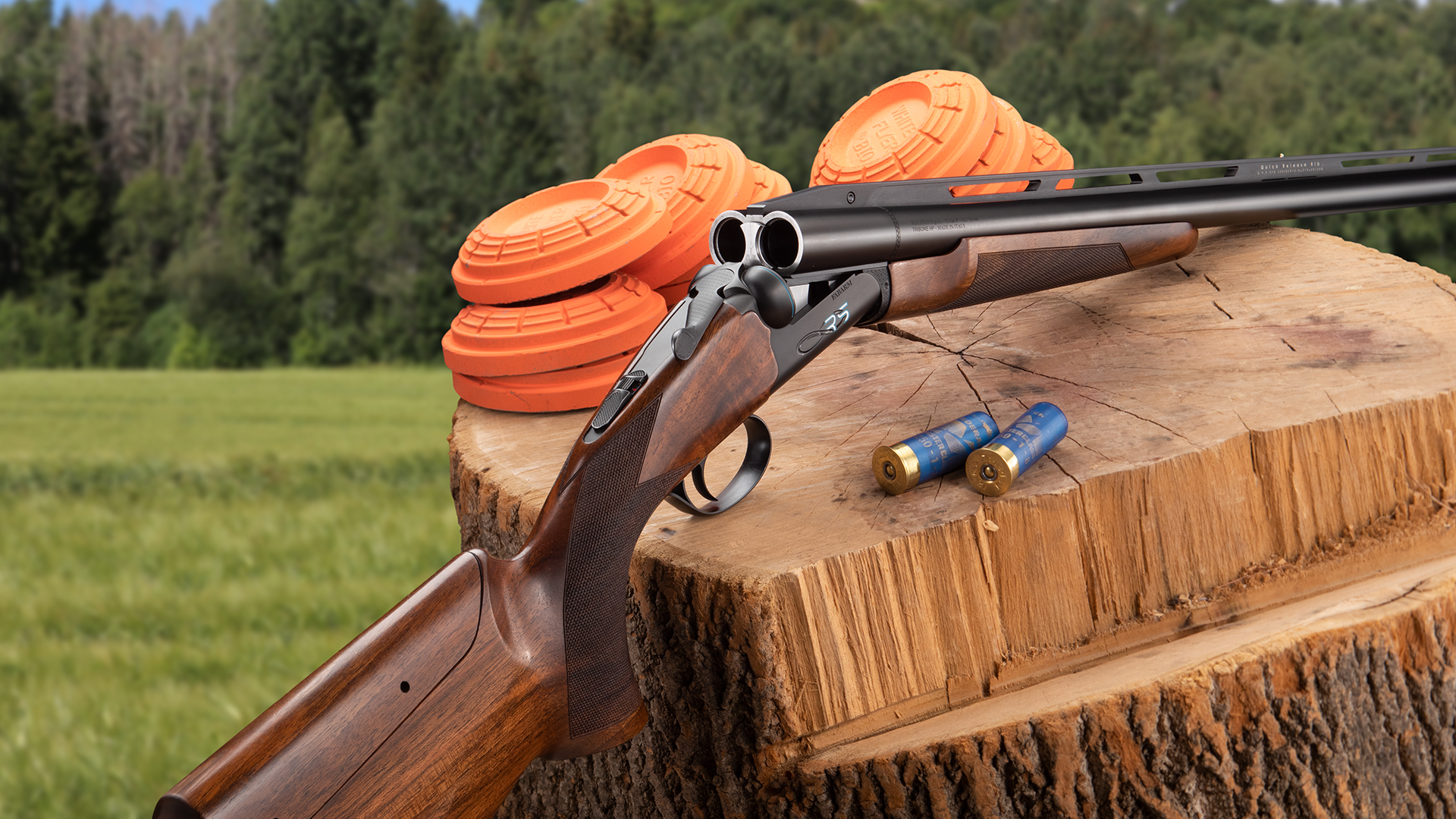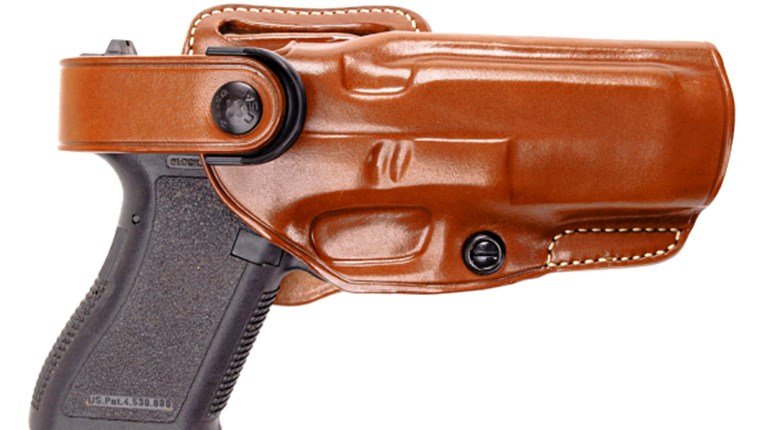
WARNING: All technical data in this publication, especially for handloading, reflect the limited experience of individuals using specific tools, products, equipment and components under specific conditions and circumstances not necessarily reported in the article and over which the National Rifle Association (NRA) has no control. The data has not otherwise been tested or verified by the NRA. The NRA, its agents, officers and employees accept no responsibility for the results obtained by persons using such data and disclaim all liability for any consequential injuries or damages.
Dry-fire practice is a staple of every handgun competitor. It’s an excellent method for developing or retaining muscle memory and technique, and there are several electronic/laser training devices that can also provide shot placement feedback. Especially for revolver shooters, the older method of safely shooting ultralight loads in one’s garage or basement is still viable, and it’s fun, to boot.
Ultralight loads are handloaded cartridges that reduce noise and bullet penetration, and eliminate recoil. The lack of recoil allows the shooter to better evaluate trigger control and follow-through. Ultralight loads contain no powder, utilizing only primer power to launch plastic or wax bullets that are less likely to cause neighbors any consternation, and permits the use of homemade, uncomplicated bullet traps.
About the only bad news is that ultralight loads won’t cycle semi-automatic pistol actions, so they’re really only appropriate for revolvers. The good news for the non-handloader is the first method described here requires no reloading tools—or any tools at all.
REUSABLE BULLETS
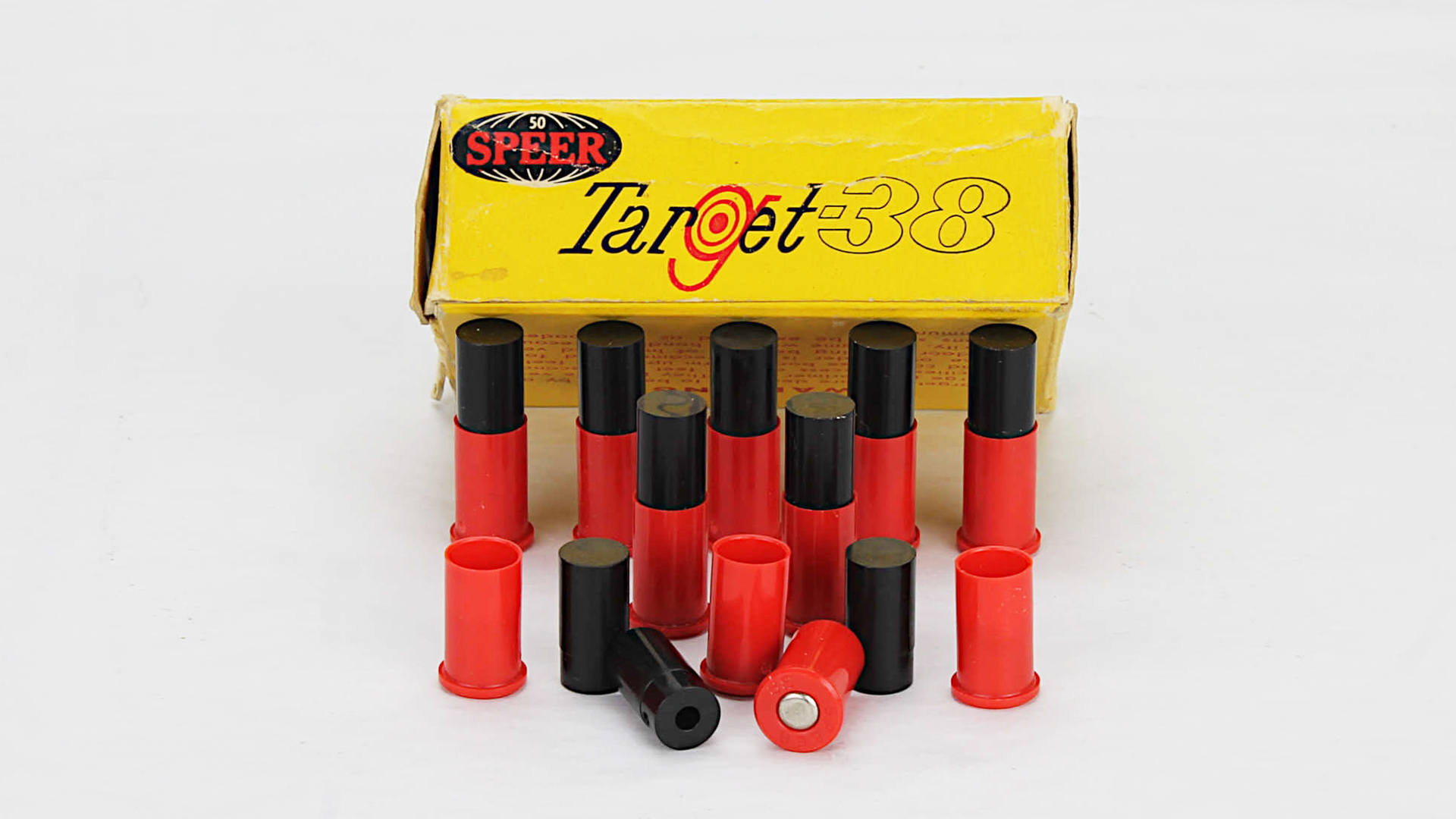
Though not commonly seen on retailers’ shelves, Speer’s .38 caliber plastic bullets and plastic cartridge cases have been around for decades, available from many sources that sell ammunition and directly from Speer. The cost for 50 cases and 50 reusable bullets is about $30; the only additional cost is for Large Pistol primers, which today run from about eight to 15 cents per primer in packs of 100.
Though .38 Special and .357 Magnum cases utilize Small Pistol primers, the Speer plastic case takes Large Pistol primers. To load a primer into a Speer plastic case, simply set the primer anvil up (cup-upward) on a benchtop or other hard surface, and press the case downward straight onto the primer with finger pressure. Plastic bullets, too, are inserted into the case with the fingers; there’s a small ledge partway up the plastic bullet that stops the bullet at the proper depth, and it snaps into place. That’s it—you’re ready to shoot.
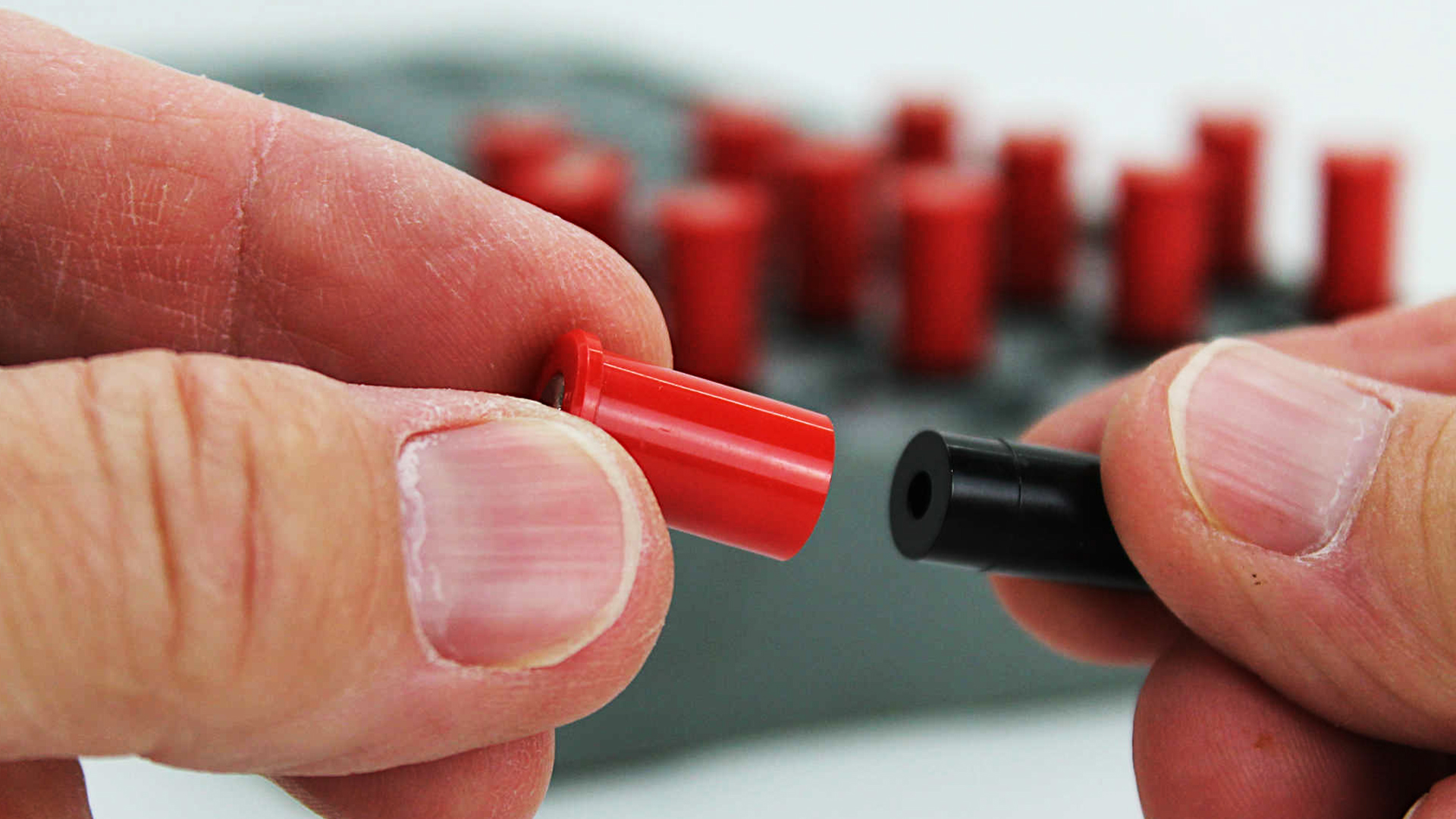
A large-ish cardboard box with a target taped on it and stuffed with rags or hung with a thick drape makes a completely adequate bullet trap that leaves plastic bullets undamaged and immediately ready for reuse. Accuracy is good out to about 25 feet. If and when accuracy degrades, clean the primer residue from the bore.
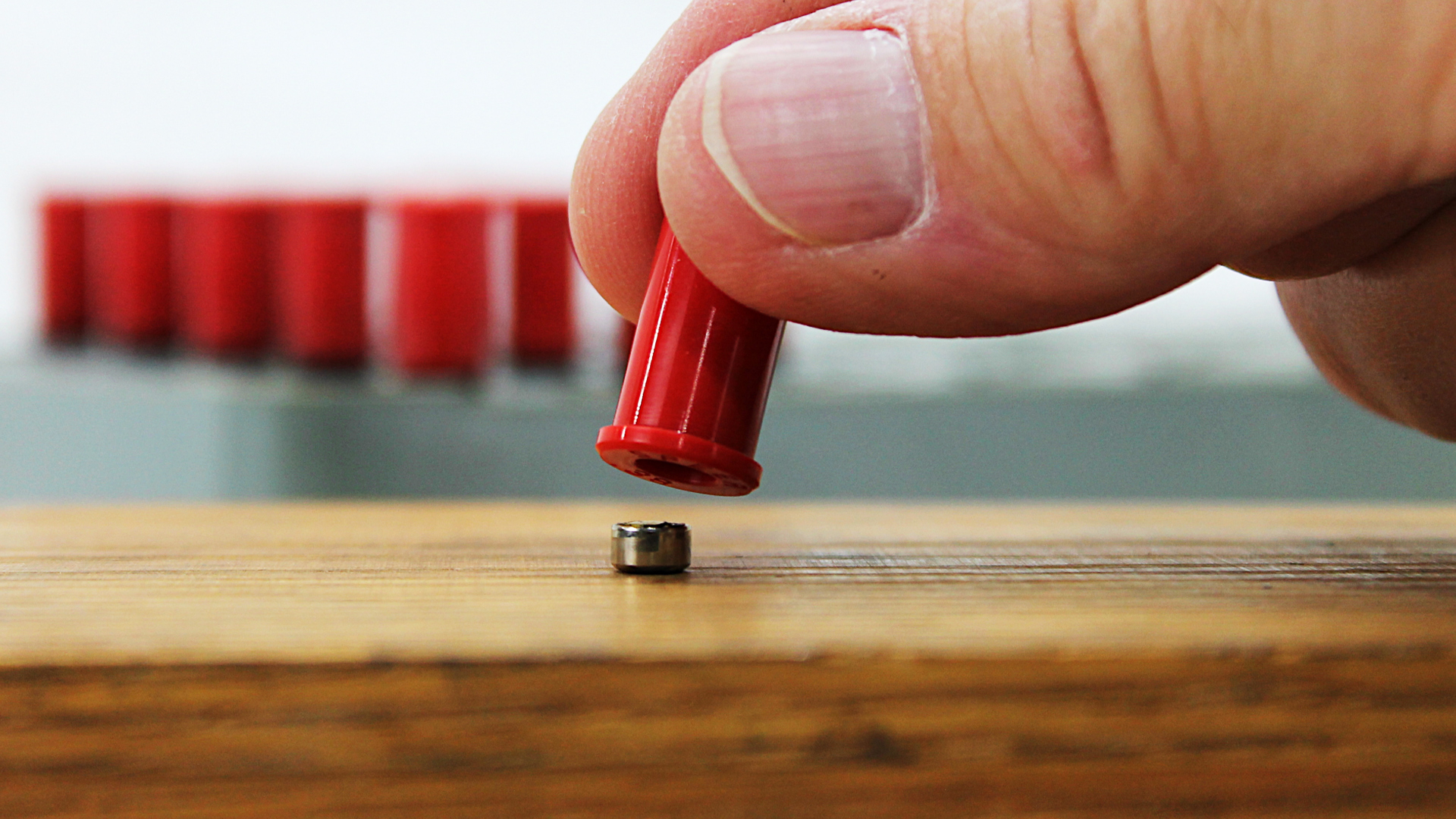
To remove expended primers, simply push them out with a common nail or similar pointed object. After a number of firings, it may be necessary to scrape burnt primer residue from the primer pocket with the tip of a sharp knife.
WAX IN, WAX OUT
An even cheaper alternative can be used for any caliber revolver, not just .38 caliber. This ultralight load utilizes common paraffin wax for the bullet and your brass cases already on hand. A primer seater tool will make the job easier, but it is possible to do without it. We covered wax bullets in more depth here.
Before starting, it’s a good idea to drill out the case primer flash holes with a 1/8 drill to about .125-inch diameter (flash holes are typically about .080 inch). If you don’t, it is possible that the pressure from an ignited Magnum primer may cause it to back out of the primer pocket and drag against the recoil shield, and a few of these in a cylinder can cause cylinder binding. I haven’t found this drilling absolutely necessary with ultralight wax bullet loads for .38 Special and .38 S&W cases when using standard primers, but if you suffer the problem, drill out the flash holes or switch to Standard primers, or both. If you do drill out flash holes, keep these cases segregated and ID them with a colored marker or lacquer and never use them for reloading regular bulleted cartridges. Burning propellant pushing backward through the enlarged flash hole will force the primer out of the case and against the recoil shield, binding the cylinder and, depending on the revolver’s headspace, possibly jet hot gas and debris backward past the primer cup.
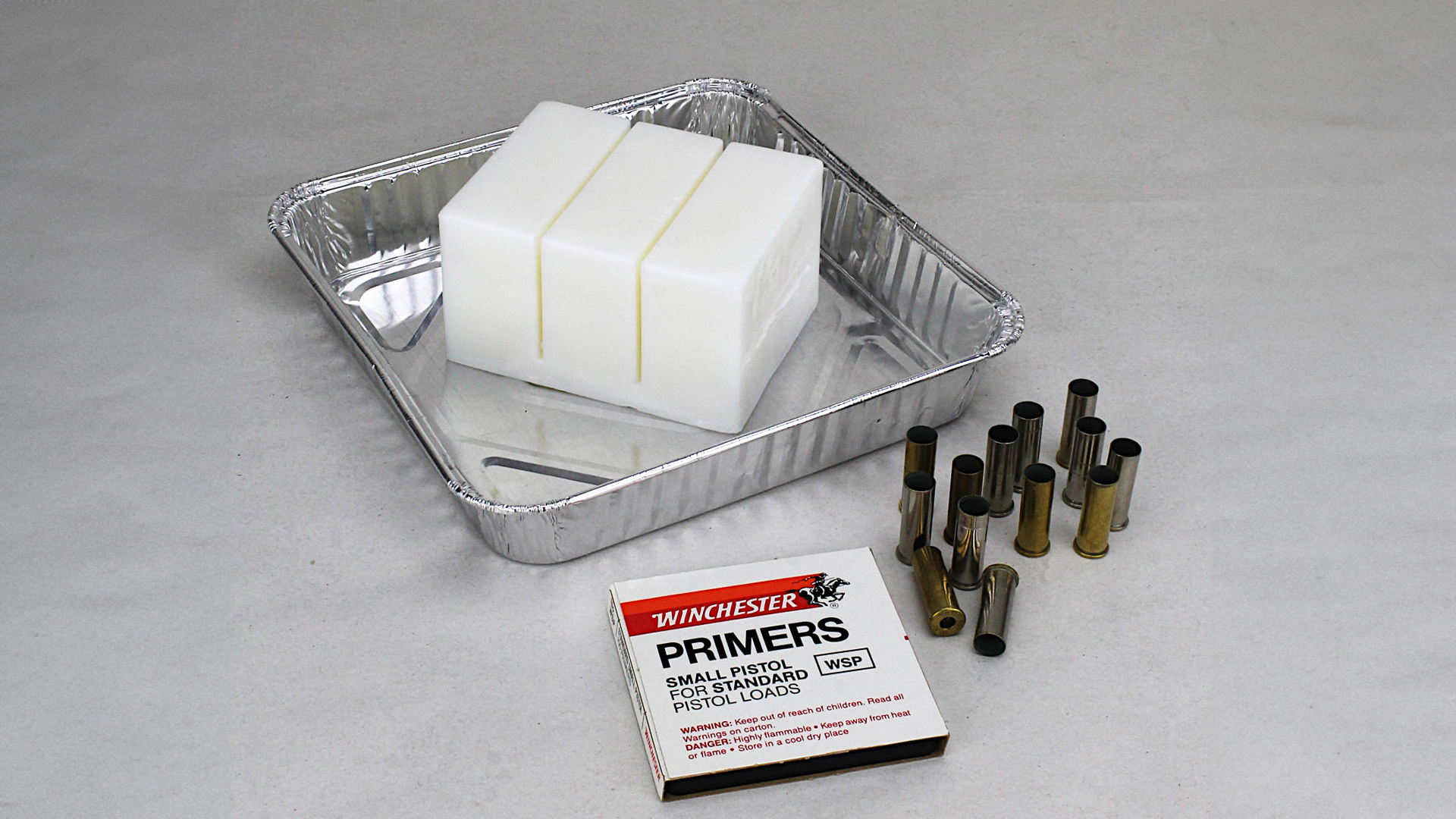
Paraffin wax is available at grocery and hardware stores in the aisle where you find the jars and lids and such for pickling and preserving. Melt the wax in an aluminum tray in the oven at low temperature—about 180° F—so that it is about a half-inch deep when liquified. When it cools, use an empty, unprimed case as a cookie cutter to cut the wax bullet free, which simultaneously seats the bullet flush with the case mouth, like a full wadcutter.
Prime the case as the last step. If you prime the case before seating a wax bullet, compressing the air inside the case when seating the wax bullet will cause it to back out and protrude. If you don’t have a primer seating tool, set the primer on a hard surface anvil-up, insert a wooden dowel into the case and press downward; when the case is flat against the hard surface, the primer is seated flush. Sometimes light tapping with a mallet may be necessary to seat primers, but consider primers are percussion sensitive and don’t overdo it. Decapping can be accomplished by drilling a hole smaller than case rim diameter into a board, centering the primer over it, and tapping it out with a hammer and nail. Fired wax bullets can be remelted and reused, if desired.
SAFETY FIRST
Ultralight loads are entertaining as well as being good training aids, but they must be afforded the respect of fully loaded ammunition when it comes to safety.
These ultralight loads are not toys, as Speer’s plastic .38 caliber bullets, pushed only by the force of the primer, can attain 400 f.p.s. velocity. A shot that misses a bullet trap can ricochet around the garage or basement and put a hurt on a person and cause permanent blindness to an unprotected eye. Wax bullets, too, deserve respect. An ignited primer is quite loud in an enclosed environment, and so hearing protection is a given. Because most primers contain lead styphnate, be sure your space is well-ventilated to prevent inhalation of airborne lead. As with all shooting sports, keeping safety first keeps it fun.














